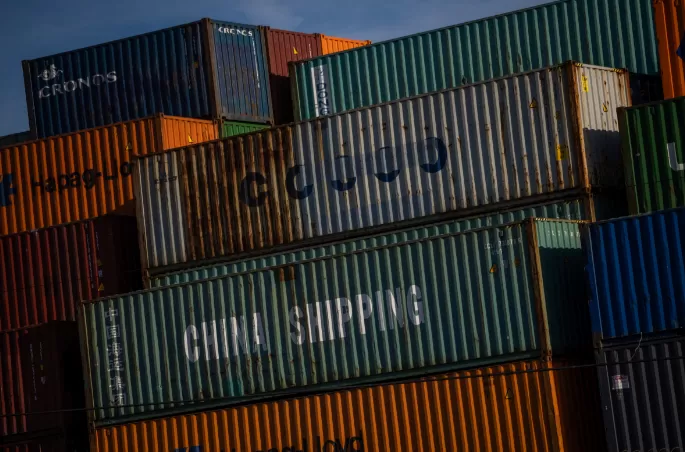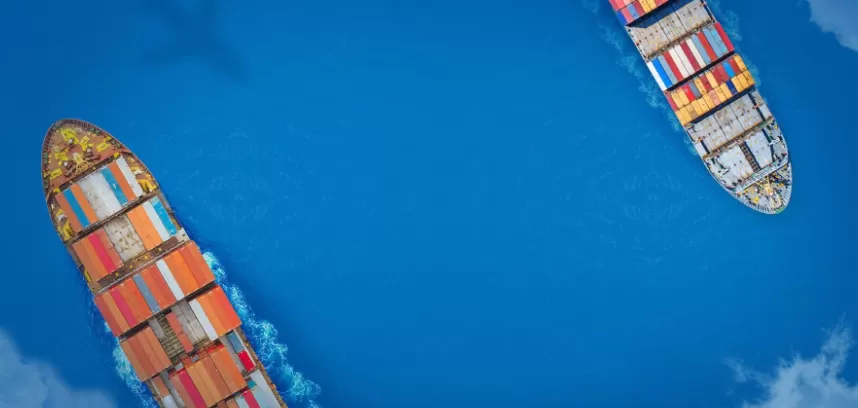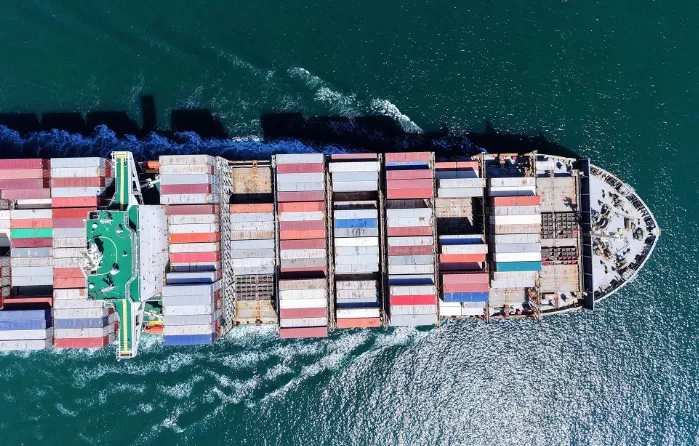Navigating the complexities of international shipping requires precise, actionable intelligence. For businesses routing freight from China to the heartland of the U.S., understanding the available options, costs, and potential pitfalls is critical for maintaining supply chain efficiency and cost-effectiveness. This guide provides professional logistics analysis and data-driven recommendations for shipping to Kansas City.
Are you ready?
Get real-time quotes for today Kansas City
Get Quotes
Highlights: Key Data at a Glance
Ocean Freight (FCL): ~2,800−4,500+/40' container from Shanghai to Kansas City (via West Coast), ~35-50 days total transit.
Air Freight: ~6.50−9.50/kg from Shanghai to MCI, ~5-10 days total door-to-door.
Express (DHL/UPS/FedEx): ~8−12/kg for door-to-door, ~3-7 days delivery.
Primary West Coast Ports: Los Angeles (LAX), Long Beach (LB) handle ~60% of China freight, with rail drayage to K.C. in ~7 days.
Peak Season Surcharge: Expect a 15-25% cost increase on ocean and air freight from August to November.
Customs Clearance: Budget 1-3 days for FDA/USDA holds if applicable; proper documentation is essential.
Drayage Cost: Railhead (e.g., Chicago, KC) to final K.C. warehouse adds ~$400-800.
Table of Contents
Understanding Your Shipping Options
Key Ports and Gateways for Kansas City Bound Freight
Cost and Transit Time Comparison: Sea, Air, Express, Rail
Case Study: SME Importer - Furniture Parts to K.C. Warehouse
Navigating Risks and Pro Tips for a Smooth Shipment
Frequently Asked Questions (FAQ)
Related Routes
Sea Freight + Parcel (commonly known as “Sea + Parcel”)
Logistics Chain: Chinese port → US West Coast port (e.g., LA/Long Beach or Oakland) → unloading/clearance/devanning → handed over to UPS/FEDEX Ground → delivered to Kansas City FBA warehouse (e.g., KTW1, MCI6).
Key Steps:
China side: The freight forwarder arranges truck pickup from your factory/warehouse to the port (e.g., Shenzhen Yantian, Shanghai Ningbo).
Ocean freight: Uses express services like Matson, ZIM, or Yantian Express. Matson is the fastest, taking about 11–12 days to Long Beach with high reliability.
US side: After clearance at LA/Long Beach, goods are moved to a nearby warehouse (e.g., near ONT8) for devanning. They are then sorted, palletized, or prepared as parcels for UPS/FEDEX final delivery.
Transit Time:
Port-to-port: 12–16 days for express vessels, 15–20 days for standard.
Clearance and devanning: 3–5 days (may delay during peak seasons).
Final UPS delivery: 4–6 days from LA to Kansas City.
Total time: 22–35 days after departure (varies by carrier and season).
Advantages: Cost-effective for shipments over 100kg; clear tracking with parcel carriers.
Disadvantages: Longer transit time; highly affected by port congestion.
Sea Freight + Parcel
Get real-time quotes for today Kansas City
Get Quotes
Sea Freight + Truckload
Logistics Chain: Chinese port → US West Coast port → clearance → full truckload transportation → delivered to Kansas City FBA warehouse.
Differences from Sea + Parcel:
Final delivery is by truck (FTL or LTL), not UPS/FEDEX.
Requires larger volume: usually a full container (FCL) or multiple pallets (LTL) to be cost-effective.
Key Steps:
Same as Sea + Parcel for the initial segment.
After clearance, for FCL, the container is directly transported to Kansas City. For LCL, goods are palletized and consolidated before trucking.
Transit Time:
Ocean and clearance times are similar to Sea + Parcel.
Trucking: ~2–3 days from LA to Kansas City (≈1,800 miles).
Total time: Comparable to Sea + Parcel, but may be slower if consolidation is needed.
Advantages: Lower cost per kg for full containers or large volumes.
Disadvantages: Minimum volume required; less transparent tracking; less flexibility for FBA appointments.
Air Freight + Parcel (for urgent shipments or high-value goods)
Logistics Chain: Chinese airport (e.g., Shanghai PVG, Guangzhou CAN) → US gateway airport (e.g., LAX, Chicago ORD) → clearance → handed to UPS/FEDEX → delivered to Kansas City FBA warehouse.
Key Steps:
Goods are picked up and delivered to the Chinese airport.
Shipped via international flights (e.g., China Airlines, Southern Airlines, FedEx freighters).
Optimal gateway: Chicago ORD is preferred over LAX for Kansas City due to its central location and shorter ground distance.
After clearance at ORD, goods are transferred to UPS/FEDEX for final delivery.
Transit Time:
Flight time: ~12–15 hours.
Airport operations/clearance: 2–3 days.
Final delivery: 1–2 days from Chicago to Kansas City via UPS Ground.
Total time: 5–8 days after departure.
Advantages: Fastest option to prevent stockouts.
Disadvantages: High cost, 3–5 times more expensive than sea freight.
Door-to-Door vs. Port-to-Port
Door-to-Door (DDP/DDU): Covers full service from pickup in China to delivery at the FBA warehouse, including booking, customs, taxes, and transportation. Recommended for small/medium sellers for its convenience.
Port-to-Port (FOB): Only covers delivery from China to the US port. You must arrange US clearance and transportation separately. Not recommended for sellers without US logistics resources.
Port-to-Port
Get real-time quotes for today Kansas City
Get Quotes
Recommendations & Checklist
Prepare detailed shipment info: product description, number of cartons, dimensions/weight per carton, total volume/weight, value, and FBA warehouse code.
Choosing a service:
Testing/urgent replenishment → Air Freight + Parcel (preferably via Chicago ORD).
Regular/large-volume shipments → Sea Freight + Parcel (prefer Matson for reliability).
Very large volumes → Compare Sea Freight + Parcel and Sea Freight + Truckload.3.
Is this pricing for Matson express or standard shipping? How long is the sailing time?
Does the quote include all charges (ORC, THC, customs clearance, duties, bond, UPS fees, palletizing)? What additional fees might apply?
How many days after arrival does it take for devanning?
Will you provide UPS tracking numbers after departure?
What documents are needed for FBA appointment scheduling?
Key questions for freight forwarders:
Logistics Route Comparison: China to Kansas City, USA
|
Mode of Transport
|
Origin Port/City
|
Estimated Cost (USD)
|
Estimated Transit Time
|
Key Features & Applicability
|
|
FCL (Full Container Load)
|
Shanghai/Ningbo/Shenzhen
|
~5,800–7,200 / 40' container
|
35–45 days
|
Best value for money. Ideal for large, non-urgent shipments. Requires customs clearance at LA/LB ports + rail transit to Kansas City.
|
|
LCL (Less than Container Load)
|
Shanghai/Ningbo/Shenzhen
|
~95–130 / CBM
|
40–50 days
|
Flexible. Suitable for smaller shipments. Slightly slower than FCL due to consolidation. Requires rail transit.
|
|
China Railway Express
|
Xi'an/Chengdu, etc.
|
~8,500–10,000 / 40' container
|
30–40 days
|
Balances speed and cost. Faster than ocean, cheaper than air. Reliability may vary due to international policies.
|
|
Air Freight
|
Shanghai/Beijing/Guangzhou
|
~6.50–9.00 / KG
|
5–10 days
|
Fastest option. Ideal for high-value or urgent goods. Highest cost. Typically trucked from Chicago/Dallas hubs.
|
|
International Express
|
Door pickup
|
~50–80 / KG (example)
|
3–7 days
|
Door-to-door speed. Best for small parcels, samples, or documents. hassle-free but highest cost per unit.
|
Key Notes:
Prices are estimates: All rates are market references . Actual quotes vary based on fuel surcharges, seasonality, exchange rates, cargo details, and final-mile delivery.
Quote basis: Ocean and rail rates are typically quoted as port-to-portor door-to-port, excluding destination customs, duties/taxes, and truck delivery. Air and express rates usually include end-to-end costs.
Customs clearance required: All shipments must clear U.S. customs. While Kansas City is a port of entry, clearance often occurs at West Coast ports. Ensure all documents are prepared in advance.
Total transit time: Estimates include transport + port handling + customs + inland rail/trucking. Delays may occur if customs inspections are required.
Kansas City
Get real-time quotes for today Kansas City
Get Quotes
How to Choose?
Lowest cost, non-urgent: Choose FCL.
Smaller shipments, cost-effective: Choose LCL.
Balance time and budget: Consider rail.
High-value or urgent: Opt for air or express.
Case Study: SME Importer - Furniture Parts to K.C. Warehouse
Company: "Midwest Home Designs," a Kansas City-based assembler of ready-to-assemble furniture.
Challenge: Needed to cost-effectively import 18 CBM of wooden furniture parts and hardware from a manufacturer in Ningbo, China, to their distribution warehouse in K.C. every 45 days. Timeliness was key to maintaining assembly schedules, but budget constraints ruled out air freight.
Solution: The logistics provider recommended LCL shipping from China to the Kansas City area via the Port of Long Beach.
Execution: The shipment was consolidated in Ningbo, sailed to LB, and efficiently cleared customs. It was then moved via rail to a Chicago ramp, followed by final truck drayage to the K.C. warehouse.
Outcome: Total transit time was 42 days. Total landed cost was approximately $3,800 (including ocean freight, LCL fees, customs bond, rail drayage, and trucking). This provided the perfect balance of reliability and cost savings, allowing Midwest Home Designs to maintain lean inventory without expensive air freight bills.
Navigating Risks and Pro Tips for a Smooth Shipment
Peak Season Surcharges (PSS): From August to November, demand spikes. Book ocean and air space 4-6 weeks in advance to secure capacity and avoid premium rates.
Customs Clearance Issues: Incomplete or incorrect documentation is the primary cause of delays. Ensure your commercial invoice, packing list, and bill of lading are perfectly consistent. Work with a licensed customs broker.
Tariffs and Duties: Classify your products correctly with the HTSUS (Harmonized Tariff Schedule) code to determine accurate duty rates. Factor these costs into your total landed cost calculation.
Port Congestion: West Coast ports can experience labor-related or weather-related delays. Have a contingency plan and buffer your inventory timeline.
Drayage Delays: Trucker and chassis availability at rail ramps can cause delays. Partner with a forwarder who has strong carrier relationships in the Chicago and K.C. markets.
Pro Tip: Always use Incoterms 2020 correctly. For maximum control, ship under FOB (Free On Board) from China, which gives you control over the main freight leg and lets you appoint your own forwarder.
Shipping Cost Comparison: Freight Forwarder vs. Standard Rates
Key Insight: Shipping costs are influenced by multiple variables including weight, dimensions, fuel surcharges, and lane demand. As a major inland logistics hub, shipments to Kansas City typically transit through West Coast ports such as LA/Long Beach before moving via rail or truck.
Air Shipping Comparison:
Standard Rates (e.g., DHL/UPS Direct): Suitable for small-volume door-to-door service. Sample cost for 150 kg cargo: approximately $825–$1,200 ($5.50–$8.00/kg). Higher rates reflect end-to-end premium service charges.
Freight Forwarder Consolidation: By grouping shipments, forwarders secure volume discounts from airlines. The same 150 kg shipment typically costs $525–$825 ($3.50–$5.50/kg), resulting in 25–40% savings—including customs clearance and final-mile delivery.
Ocean Shipping (LCL) Comparison:
It’s not feasible for individuals to book directly with ocean carriers—freight forwarders are the only practical option for SMEs.
Forwarders provide door-to-door rates based on volume ($180–$300+/CBM) or weight ($150–$250+/metric ton). For example, a 5 CBM / 750 kg shipment totals around $900–$1,500.
This is the most cost-efficient solution for non-time-sensitive cargo.
Why Use a Freight Forwarder?
Beyond cost savings, forwarders help you avoid hidden fees and operational risks:
Volume-based shipping discounts (save 25–40%)
Built-in customs clearance (save $100–300 in broker fees)
Expert HS code classification (avoid tariff penalties)
DDP quotes prevent unexpected charges
Single point of contact reduces management overhead
Tips to Reduce Costs:
Optimize packaging: A 10% reduction in volume equals 10% savings in ocean freight
Plan ahead: Allow 4–5 weeks for ocean transport to avoid air freight emergencies
Request DDP quotes: Ensure all-inclusive pricing with no surprises
Provide accurate details: Prevent requoting and additional fees
The Bottom Line:
Under 50 kg: Compare integrated parcel services from forwarders with direct courier quotes
Over 150 kg / 2 CBM: LCL ocean shipping via a forwarder is the most economical method
Forwarders don’t just offer better rates—they give SMEs access to wholesale-level pricing and expertise typically reserved for large corporations.
Amazon FBA
Get real-time quotes for today Kansas City
Get Quotes
Frequently Asked Questions (FAQ)
Q1: Should I ship via East Coast or West Coast ports for Kansas City?
A: For most shipments originating in Northern or Eastern China, the West Coast (LA/LB) is faster and more cost-effective due to shorter ocean transit and established rail links. For Southern China origins, get quotes for both; the all-water route to Savannah or Houston can sometimes be competitive.
Q2: What is the difference between FCL and LCL shipping?
A: FCL is for full container loads. It's faster at terminals and more secure. LCL is for less-than-container loads. You share space and cost with other shippers, but it involves more handling and longer processing times. The breakeven point is typically around 15-18 CBM.
Q3: Is express shipping like DHL the same as air cargo?
A: No. Express air is an integrated, door-to-door service for smaller parcels, with customs clearance handled by the carrier. Air cargo is typically airport-to-airport for larger palletized shipments, and you or your forwarder must arrange customs clearance and final trucking.
Q4: How are duties and taxes calculated for my shipment?
A: Duties are based on the product's HTSUS code and the entered value of the goods (typically the cost of the goods plus freight and insurance). Taxes may include MPF (Merchandise Processing Fee) and possibly state sales tax.
Q5: What documents are required for customs clearance?
A: The essential documents are a Commercial Invoice, Packing List, Bill of Lading (or Air Waybill), and ISF Filing (for ocean freight, must be filed 24+ hours before loading).
Q6: Why is Kansas City a major logistics hub?
A: Kansas City is a designated "Foreign Trade Zone" and a major rail hub, with extensive intermodal facilities for BNSF and Union Pacific. Its central U.S. location makes it an ideal distribution point.
Related Routes:
freight forwarder from China to Angeles
Shipping from China to Portland
Ship from China to Wichita
Shipping From China To Des Moines

 EN
EN
 FR
FR
 ES
ES
 JA
JA
 PT
PT
 RU
RU
 AR
AR









